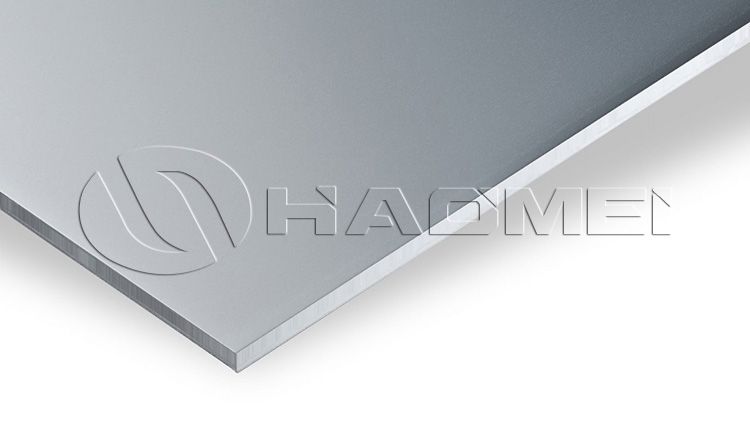
Address: No.14 Waihuan Road, CBD, Zhengzhou, China
Tel: +86-15978414719
Fax: +86-371-65621393
Mail: sale@alumhm.com
Time:2025-09-26
In the aviation manufacturing industry, material performance is directly related to aircraft safety, weight reduction, and operational efficiency. As a commonly used high-strength aluminum alloy, 7075 aircraft grade aluminum, with its excellent properties, has become a key choice for the manufacture of numerous aviation components.

I. Core Performance Advantages of 7075 Aviation Aluminum Sheet
7075 aviation aluminum sheet belongs to the Al-Zn-Mg-Cu family of ultra-hard aluminum alloys. Its performance advantages are primarily reflected in the following aspects. First, it offers high strength. After proper heat treatment (such as T6 or T73 tempers), its tensile strength can reach over 500 MPa and its yield strength exceeds 430 MPa, both of which are relatively high among aluminum alloys and can withstand the complex stresses generated during aircraft flight.
Secondly, it possesses excellent fatigue strength, a crucial characteristic for aircraft. During long-term takeoffs and landings, aircraft components are subjected to repeated loads. Good fatigue strength reduces the risk of failures caused by fatigue damage. Furthermore, the density of 7075 aviation aluminum sheet is approximately 2.81g/cm³, significantly lower than that of steel (approximately 7.85g/cm³). While maintaining structural strength, it can effectively reduce the overall weight of an aircraft, thereby reducing fuel consumption and improving flight performance.
II. Typical Application Scenarios in the Aviation Industry
Due to these performance advantages, 7075 aviation aluminum sheet has extensive and critical applications in aviation manufacturing. In aircraft fuselage structures, it is often used to manufacture core load-bearing components such as fuselage frames and wing spars. These components must meet the requirements of both high strength and lightweight, and the properties of 7075 aviation aluminum sheet perfectly meet these requirements.
In wing systems, this material is also commonly used in movable components such as flaps and ailerons. Its excellent strength and fatigue resistance ensure that these components operate stably under frequent operation and complex airflow environments. Furthermore, in aircraft landing gear structures, some load-bearing components are also made of 7075 aviation aluminum sheet to withstand the significant impact and loads endured during takeoff and landing.
III. Precautions During Processing and Use
Although 7075 aviation aluminum sheet offers excellent performance, certain key points require attention during processing and use. During machining, due to its high hardness, rapid tool wear is common during cutting. Therefore, it is important to select appropriate tool materials (such as carbide tools) and properly control cutting parameters (such as cutting speed and feed rate). Cooling lubricants can also be used to reduce friction and heat during machining, thereby improving precision and efficiency. Regarding heat treatment, different heat treatment conditions directly affect material properties. Strictly adhere to heat treatment process specifications based on specific application requirements to ensure the material achieves the expected strength, hardness, and other performance indicators.
During use, it is important to pay attention to the material's corrosion resistance in specific environments. While inherently corrosion-resistant, corrosion may occur in marine climates, humid environments, or when exposed to corrosive media. Therefore, necessary anti-corrosion measures, such as surface coatings and regular maintenance and inspections, are necessary to extend the material's service life and ensure the safety of aviation components.
IV. Market Status and Development Trends
Currently, with the continuous development of the global aviation industry, especially the growing demand for high-performance materials in commercial, general, and military aviation, market demand for 7075 aerospace aluminum plate remains steadily rising. Numerous aluminum alloy manufacturers, both domestic and international, are prioritizing its R&D and production, while continuously optimizing production processes to enhance product quality and performance stability to meet the aviation industry's requirements for higher precision and reliability.
Looking at development trends, future research on 7075 aviation aluminum sheet will focus on further improving its overall performance. For example, by fine-tuning alloy composition and developing novel heat treatment processes, these efforts will enhance its corrosion resistance and low-temperature performance while maintaining its high strength and lightweight advantages. Furthermore, as aviation manufacturing technology evolves towards integration and intelligentization, higher requirements will be placed on the processing of 7075 aviation aluminum sheet, driving continuous innovation in related processing technologies to better adapt to the complex designs and efficient manufacturing requirements of aviation components.